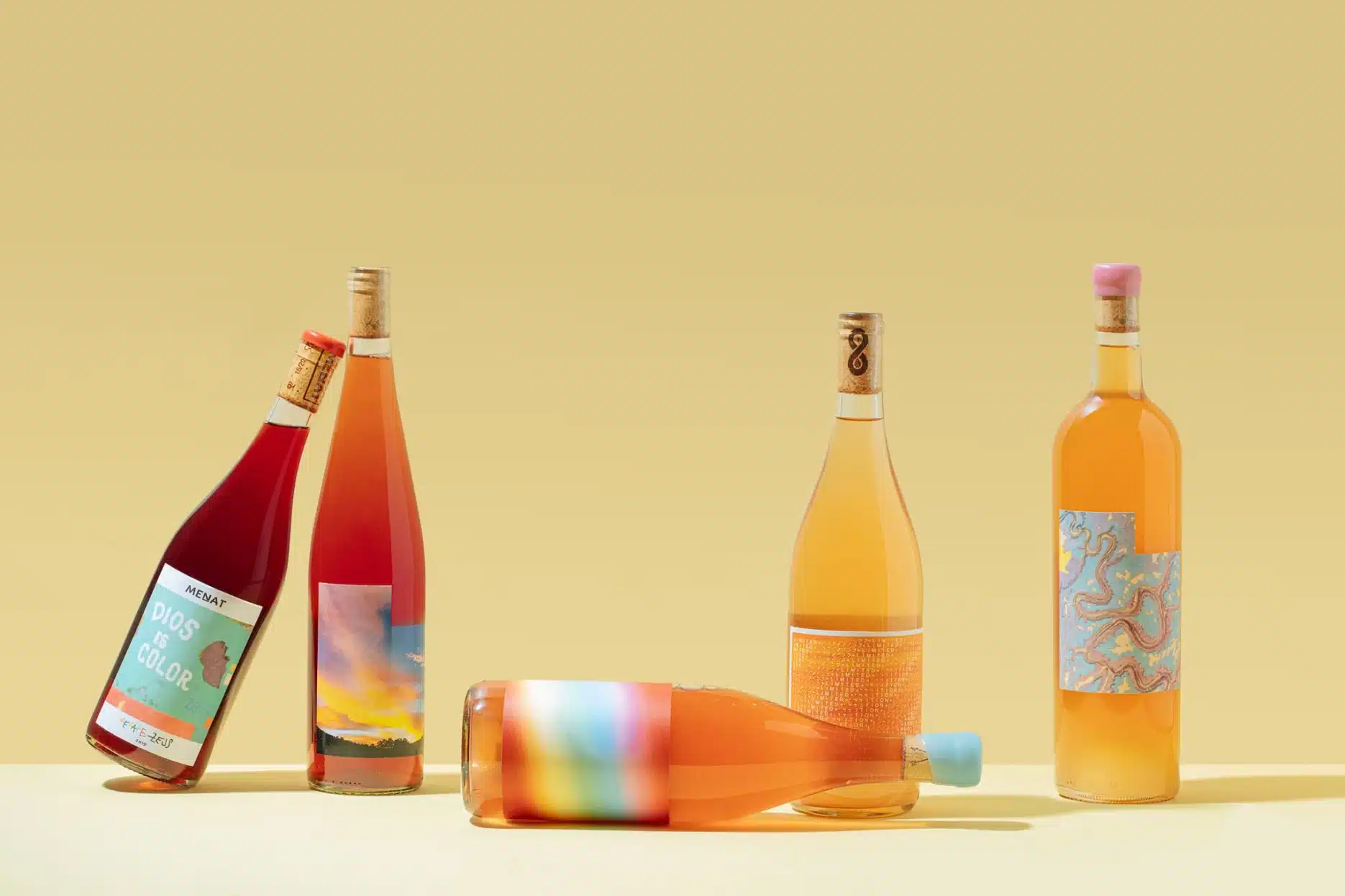Orange wines are becoming increasingly popular with wine lovers and professionals alike. This unique style, derived from an ancestral method, seduces with its originality and complex aromas.
The history of orange wines: from ancient origins to modern trends
1. A thousand-year-old technique
Orange wines originated in Georgia over 8,000 years ago. Georgian winemakers used qvevris (large clay jars) to ferment grapes with their skins, giving the wine its amber color.
2. A recent renaissance
This style of wine was rediscovered in the early 2000s, notably by winemakers in Italy and Slovenia. They popularized this traditional method in response to the growing interest in natural wines.
3. Worldwide popularity
Today, Orange wines are produced all over the world, from California to Australia, while remaining true to their artisanal approach.
How are orange wines produced?

1. A unique method
The natural wine production of Orange wines follows a minimalist, environmentally-friendly approach.
- Process: White grapes ferment with their skins and sometimes their stalks, as for a red wine.
- Maceration time: This stage lasts from a few days to several months, depending on the style required.
2. The importance of grape skins
The skins provide tannins, structure and a characteristic amber color. They also influence aromas, giving notes of dried fruit, spices and honey.
3. Winemaking techniques
- Use of clay jars: This ancestral method provides gentle, natural micro-oxygenation.
- Indigenous yeasts: The producers prefer to use natural yeasts present on the grapes to preserve the authenticity of the terroir.
- No additives: No sulfur or other additives are added, reinforcing the image of natural wine.
4. Emblematic regions
- Georgia: Cradle of orange wines.
- Italy: Friuli and Tuscany produce orange wines with varieties such as Ribolla Gialla.
- Slovenia: The vineyards of Goriska Brda are famous for their complex amber wines.
Characteristics of orange wines
1. A unique color
Orange wines range in color from light golden to deep amber, reflecting the length of maceration.
2. Rich, complex aromas
- Typical notes: Dried fruit, candied citrus, spices, honey and dried flowers.
- Evolution: Their aromatic profile develops over time, offering a different experience with each tasting.
3. A distinctive texture
Tannins, usually absent in white wines, give a more structured texture and a unique mouthfeel.
4. Balanced acidity
These wines combine freshness and intensity, making them versatile for many food pairings.
Wine tasting: how to appreciate orange wines?
1. Prepare the right conditions
- Serving temperature: Serve slightly chilled, between 10 and 14°C, to reveal their aromas without masking their complexity.
- Use the right glasses: Red wine glasses bring out the rich aroma of red wine.
2. Explore their aromas
Take the time to observe their color and smell their fragrance before taking your first sip.
3. Enjoy their structure
Tannins and acidity add a unique dimension, different from traditional white or red wines.
4. Food pairing with orange wines
- Spicy cuisine: They go perfectly with Asian and Indian dishes.
- Ripened cheeses: Their tannic structure balances the richness of the cheeses.
- Mediterranean dishes: Grilled vegetables and herbs go well with their complex notes.
Mistakes to avoid with orange wines
1. Compare with traditional wines
Orange wines have their own identity. Don't judge them by white or red wine standards.
2. Serve them too cold
Too low a temperature masks their subtle aromas and complexity.
3. Disregard personal preferences
Their profile can be surprising for novices. Introduce them with light, accessible styles.
Why are orange wines so appealing?
1. An alternative to classic wines
They attract enthusiasts in search of novelty and authenticity.
2. An environmentally-friendly approach
Natural wine production promotes sustainable practices that respect the terroir.
3. Attractive aesthetics
Their amber color and artisanal presentation make them a popular choice for special occasions.
Orange wine trends
1. Dedicated events
Many wine fairs offer special tastings to highlight this unique style.
2. Sommelier interest
Michelin-starred restaurants are increasingly including them on their menus to surprise their customers.
3. Expansion of production regions
Vineyards in California, South Africa and Australia are adopting these methods to diversify their offering.
Conclusion: orange wines, an experience to discover
Orange wines, with their rich history, natural wine production methods and unique qualities, offer an incomparable experience. Their bold character and complexity make them an ideal choice for curious wine lovers or special occasions. At your next wine tasting, take the time to savor an orange wine and let yourself be seduced by its uniqueness.
If you enjoyed this article, you may also be interested in "Rare grape varieties to discover to enrich your cellar"!





